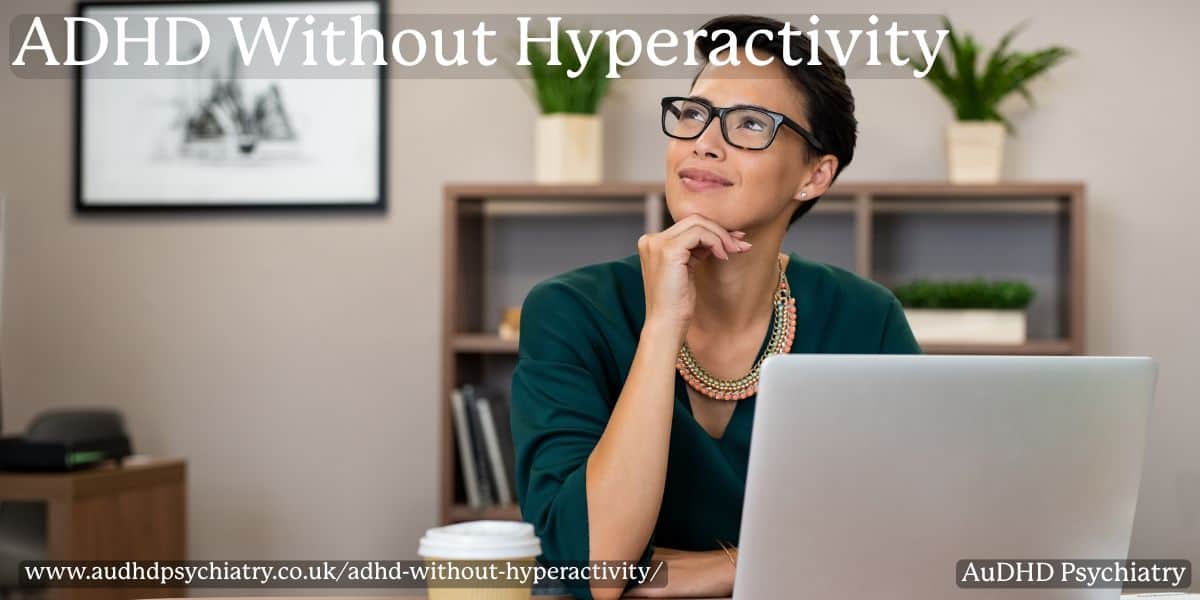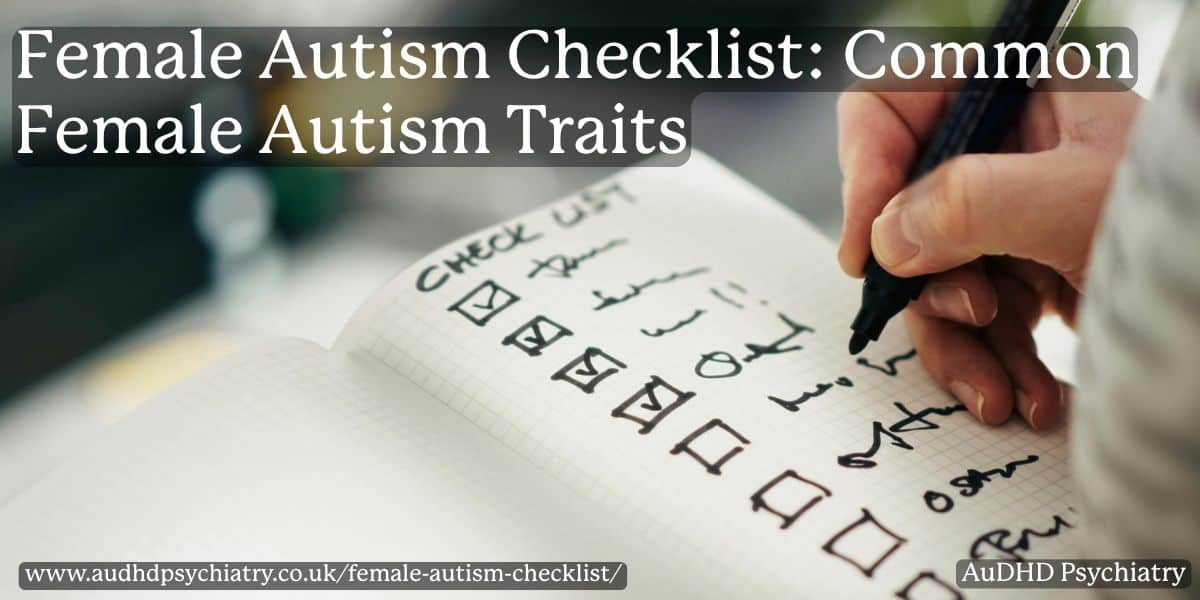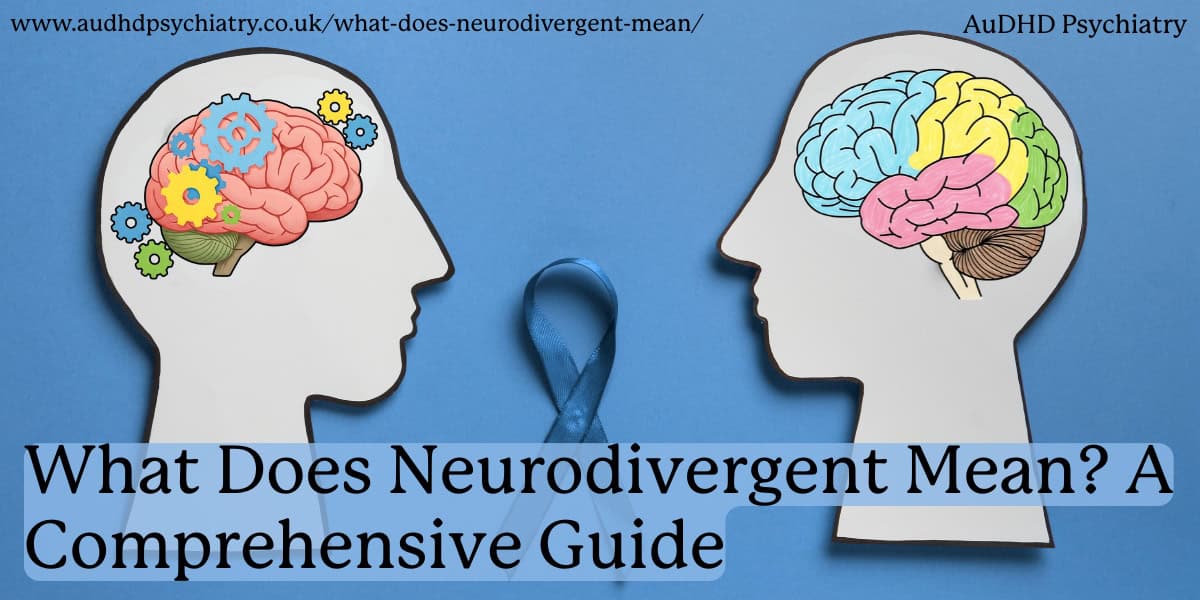
Understanding Neurodiversity and the Human Brain
Have you ever wondered why some people seem to think, focus, or process the world so differently? What we often call “neurodivergence” is a reflection of how uniquely the human brain works. It’s not a flaw, but a form of natural diversity.
The term neurodivergent describes people whose brains function differently from what’s considered “typical.” This can include variations in attention, learning, communication, and emotional regulation. Conditions such as autism, ADHD, dyslexia, and Tourette syndrome are among the many ways the brain can be wired differently.
Understanding what neurodivergent means is essential for inclusion in education, work, and healthcare. It’s a reminder that people’s brains operate in different ways, and that these differences often come with valuable strengths. The growing neurodiversity movement encourages society to view these variations not as disorders, but as natural parts of the human experience.
In this article, we’ll share what neurodivergence means, the different types, and how to support neurodivergent individuals. If you’ve ever felt that your brain works differently, you don’t have to navigate it alone. Book your free intro call today to start your journey toward clarity and self-understanding.
What Does Neurodivergent Mean?
Definition of Neurodiversity
Being neurodivergent isn’t about having something “wrong”. It’s recognising that people’s brains can work in different ways. Some individuals may experience the world through heightened sensory perception, while others may find routine and repetition grounding. These variations shape how each person thinks, learns, and interacts.
By contrast, neurotypical people tend to think and respond in ways that are similar to social norms. Understanding this difference helps shift the focus away from deficits and towards inclusion.
This perspective underpins the growing neurodiversity movement, which advocates for acceptance, accessibility, and respect for every individual’s cognitive style. From classrooms to workplaces, embracing neurodivergent people means designing spaces that allow everyone to contribute their strengths.
Conditions such as autism, dyslexia, and ADHD are all examples of neurodivergence—natural variations in how the brain functions. You can learn more about one of these conditions in our article What Is ADHD?, which explores how attention and focus can differ across individuals.
What Is Neurodivergence: Understanding the Concept
The idea of neurodiversity emerged in the late 1990s when Australian sociologist Judy Singer coined the term to describe neurological diversity. It refers to the natural differences in how brains develop, think, and process information. Instead of viewing these differences as problems, the neurodiversity paradigm recognises them as part of the normal range of human variation.
This framework contrasts sharply with the traditional medical model of disability, which highlights diagnosing and treating “disorders.” The social model of disability, embraced by the neurodiversity movement, argues that challenges often arise not from a person’s neurology but from environments that fail to accommodate their needs.

Overview of Neurodivergent Life Experiences
For example, a neurodivergent person might struggle in noisy, unstructured classrooms, not because they lack ability, but because the setting isn’t suited to their learning style. When inclusive environments are designed to support varied attention patterns, communication styles, and sensory preferences, neurodivergent individuals can thrive.
It’s also important to understand that having neurodivergent traits doesn’t automatically mean having a clinical diagnosis. Many people exhibit characteristics such as strong pattern recognition, deep focus, or creativity—traits sometimes mistaken for conditions like ADHD or autism. For more on how diagnostic language evolves, you can explore ADD vs ADHD.
Similarly, misconceptions such as “everyone has a little ADHD” overlook the real challenges faced by those whose symptoms impact daily functioning. Ultimately, the concept of neurodiversity encourages society to value all minds equally. By moving beyond stereotypes and embracing differences, we build more compassionate systems in education, healthcare, and the workplace, where every brain type is respected and supported.
Neurodivergent Types
The term “neurodivergent” serves as an umbrella for a wide range of neurodevelopmental conditions and mental health conditions that may affect how a person thinks, learns, and interacts with the world. These different conditions are not deficits, but variations in how the brain is wired, each contributing to human creativity and diversity.
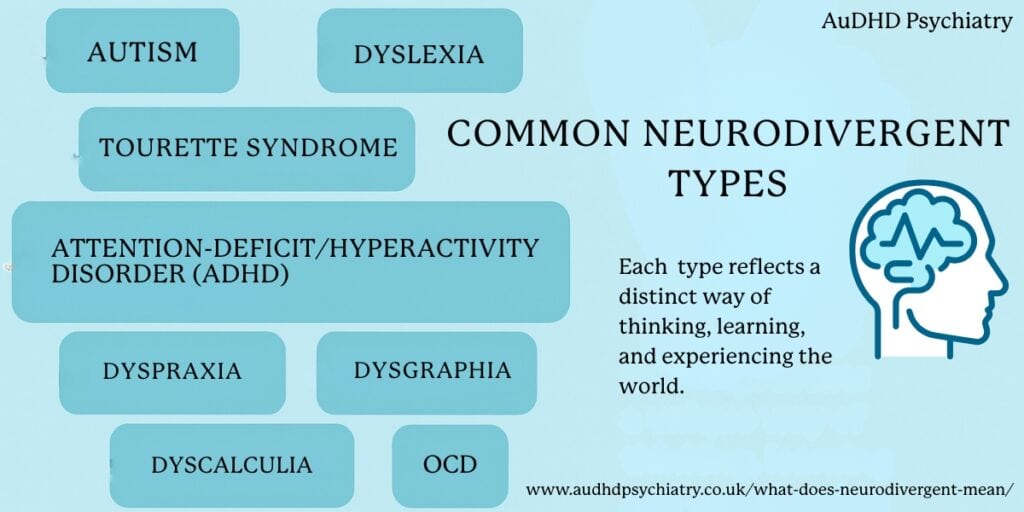
Common Examples of Neurodivergent Conditions
Autism Spectrum Disorder (ASD):
Autism is one of the most recognised neurodivergent conditions, characterised by differences in social communication, repetitive behaviours, and sensory sensitivities. Autistic individuals often excel in attention to detail, analytical thinking, and memory, though they may experience difficulties with social cues or sensory overload. The autistic community plays a leading role in shaping the modern neurodiversity movement, promoting self-advocacy and acceptance.
Attention-Deficit Hyperactivity Disorder (ADHD):
People with ADHD experience challenges with executive function, including attention, planning, and impulse control. Yet, they also display strengths in innovation, adaptability, and hyperfocus. Understanding ADHD as a form of neurodivergence helps move away from stigma and toward empowerment.
For more insight, see What Is the Difference Between ADHD and Autism?
Dyslexia, Dyspraxia, and Dyscalculia:
These conditions affect reading, coordination, and number processing, respectively. Dyslexic people may find written language challenging but often excel in creative problem-solving and spatial reasoning. Similarly, individuals with dyspraxia may struggle with fine motor skills yet show strong strategic thinking.
Tourette Syndrome and Obsessive-Compulsive Disorder (OCD):
Tourette Syndrome involves involuntary movements or vocal tics, while OCD is characterised by intrusive thoughts and repetitive behaviours. Both conditions reflect unique patterns in brain processes and sensory regulation.
Down Syndrome, Bipolar Disorder, and Traumatic Brain Injuries:
These are also part of the wider neurodivergent group when they influence thinking and behaviour long-term. Although bipolar disorder and intellectual disability may differ in cause, they similarly highlight the range of neurological diversity that exists within the human population.
It’s important to note that neurodevelopmental disorders like autism and ADHD differ from purely medical conditions, as they describe lifelong brain-based differences rather than illnesses to be cured. Some individuals may also experience coexisting mental health conditions such as anxiety or depression, underscoring the need for integrated, compassionate support.
For more about how emotional regulation plays a role in neurodivergence, see ADHD and Emotional Dysregulation.
How the Brain Works for Neurodivergent People
Every brain processes the world in its own way, but neurodivergent brains often operate with distinct patterns that influence perception, communication, and emotional regulation. These brain differences aren’t flaws. They’re simply alternative ways the brain functions and processes information.

Processing Information and Emotions
Many neurodivergent individuals experience variations in brain functions related to focus, sensory processing, and emotional control. Some may find it easier to concentrate on specific interests (a trait linked to hyperfocus), while others may experience difficulty filtering background noise or multitasking.
For instance, autistic people often process sensory input more intensely, leading to sensory overload in noisy or brightly lit environments. These experiences can result in repetitive behaviours, which serve as coping mechanisms for self-regulation.
Social Communication and Interaction
Social communication may differ, too. Neurodivergent people might find nonverbal communication, such as eye contact, tone, or body language, less intuitive. However, this doesn’t imply a lack of empathy; it reflects a double empathy problem, where both neurodivergent and neurotypical individuals may struggle to understand each other’s perspectives.
Unique Strengths and Perspectives
Many neurodivergent people possess exceptional strengths: creativity, deep focus, and pattern recognition among them. These unique perspectives bring valuable insight to problem-solving, design, and scientific innovation. Recognising such brain differences promotes better understanding and more inclusive environments.
For example, people with ADHD often channel hyperfocus into productive work bursts, turning intense interest into achievement. In essence, neurodivergent brains remind us that there’s no single “right” way to think or feel. The neurodiversity paradigm invites us to view these differences not as deficits, but as vital parts of human evolution and creativity.
If these traits resonate with you and you’d like to see whether getting a full assessment is for you, get in touch with us. Book a free intro call and we’ll be happy to answer your questions.
Living as a Neurodivergent Person
Life as a neurodivergent person can be both rewarding and challenging. Daily experiences may differ based on individual traits, environmental factors, and access to support. Whether at school, work, or home, neurodivergent individuals benefit most from environments that celebrate differences rather than suppress them.
Daily Life and Executive Function
Tasks such as managing time, maintaining focus, or organising daily tasks can be difficult due to executive dysfunction. However, structured strategies like visual reminders, calendars, and flexible deadlines can help build independence and stability.
Social Skills and Relationships
Navigating social settings can sometimes feel draining or confusing, especially when nonverbal cues or small talk expectations clash with how neurodivergent people communicate. Awareness training and inclusive communication approaches can reduce misunderstanding and foster mutual respect.
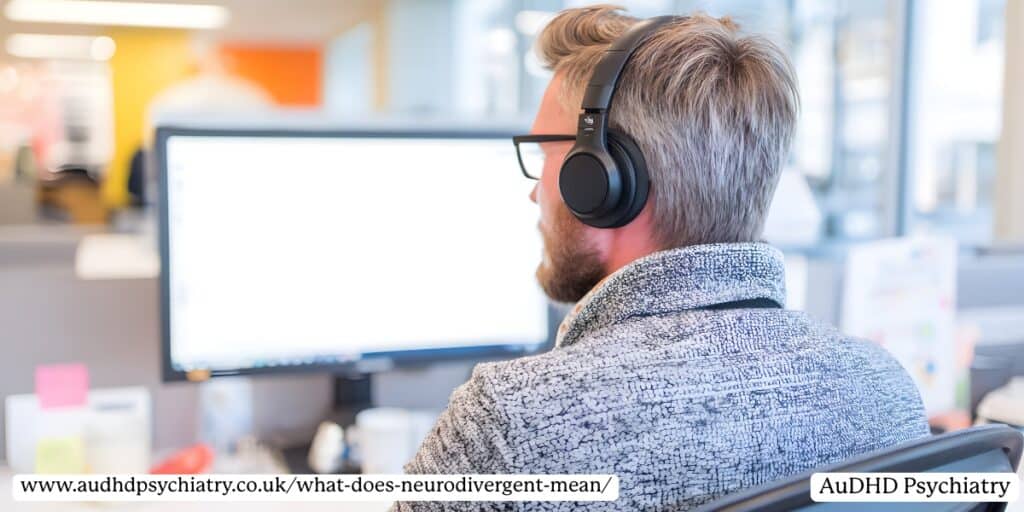
Inclusive Work and Learning Environments
In work environments, inclusive practices can transform productivity and confidence. Adjustments like flexible hours, sensory-friendly spaces, and written communication options allow neurodivergent employees to perform at their best.
Employers who adopt these practices not only improve well-being but also benefit from enhanced creativity and attention to detail, which are common neurodivergent strengths that add value to any team. For ADHDers looking for workplace support, see Access to Work ADHD: Your Essential Guide to Support and Resources.
Empowering Neurodivergent Strengths
Despite facing stigma or misunderstanding, neurodivergent individuals bring diverse talents to society. They often show extraordinary empathy, creativity, and persistence, which are skills that thrive when nurtured. Articles such as How to Manage ADHD in the Workplace explore strategies that overlap with broader neurodivergent needs, highlighting how small environmental shifts can improve quality of life and overall well-being.
Ultimately, embracing neurodivergence means recognising that human success doesn’t follow a single pattern. By supporting unique needs, society creates a culture where every mind—neurodivergent or neurotypical—can flourish.
Neurodivergent Diagnosis and Support
Getting a formal diagnosis for a neurodivergent condition such as autism or ADHD can be a transformative experience. It helps individuals better understand their brain functions, strengths, and challenges, and gain access to appropriate support through tailored therapies, workplace accommodations, or educational resources.
How the Neuorodivergent Diagnostic Process Works
To get a neurodivergent assessment, you can explore NHS and private options. At AuDHD Psychiatry, a neurodivergent diagnosis typically involves a detailed assessment by our expert healthcare professionals. We use recognised diagnostic criteria, such as those outlined in the Diagnostic and Statistical Manual of Mental Disorders (DSM-5), to evaluate developmental history, behaviour patterns, and social communication.
Our assessments are evidence-based, compassionate, and designed to reflect how neurodivergence appears in real life.
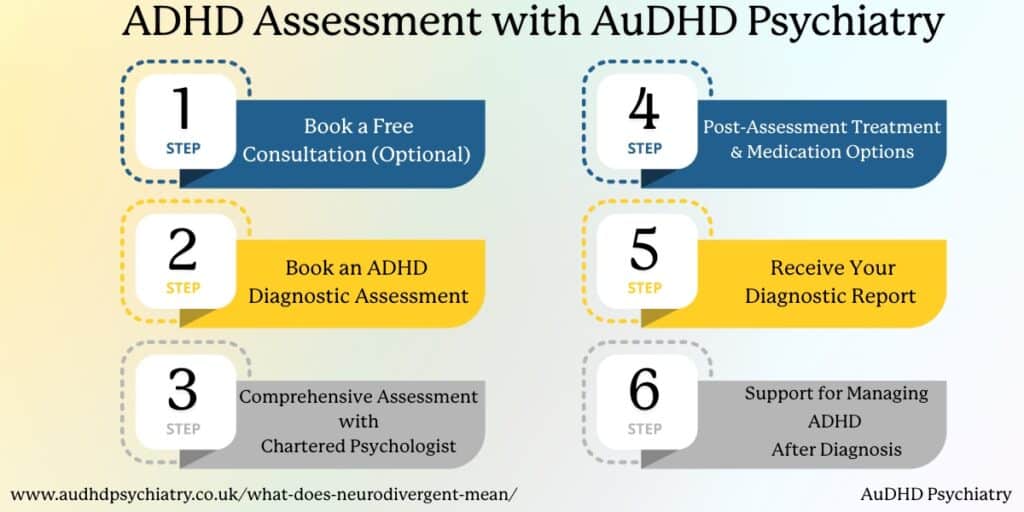
ADHD Diagnostic Process at AuDHD Psychiatry
Our ADHD assessments combine clinical expertise with a deep understanding of how symptoms appear in adults, women, and children. Each stage is tailored to provide clarity, accuracy, and actionable next steps.
Step 1 – Free Intro Call (Optional)
Begin your journey to clarity with a no-obligation consultation to discuss your concerns and see whether an ADHD assessment is right for you. You can ask questions, learn what to expect, and receive guidance from one of our clinicians.
Step 2 – Booking Your ADHD Assessment
Once you’re ready, we’ll arrange your diagnostic assessment. This begins with a detailed intake form covering your symptoms, background, and daily life experiences—essential for understanding how ADHD affects you in context.
Step 3 – In-Depth Clinical Interview
A chartered psychologist or psychiatrist conducts a structured interview, evaluating attention, impulsivity, executive function, and any co-occurring mental health conditions. Assessments follow DSM-5 diagnostic criteria to ensure clinical accuracy.
Step 4 – Post-Assessment Treatment Planning
Once results are reviewed, your clinician will discuss tailored treatment options. Depending on your needs, this may include stimulant or non-stimulant medication, cognitive behavioural therapy (CBT), or ADHD coaching to build focus, organisation, and emotional regulation.
Step 5 – Receiving Your Diagnostic Report
You’ll receive a full diagnostic report confirming whether you meet criteria for ADHD and what type—such as inattentive, hyperactive-impulsive, or combined. It also includes recommendations for education, workplace adjustments, and lifestyle strategies.
Step 6 – Ongoing ADHD Support
After diagnosis, you can access continuing care through therapy, medication management, or structured coaching. Our clinicians can also assist with Access to Work or academic accommodations to help you thrive long-term.
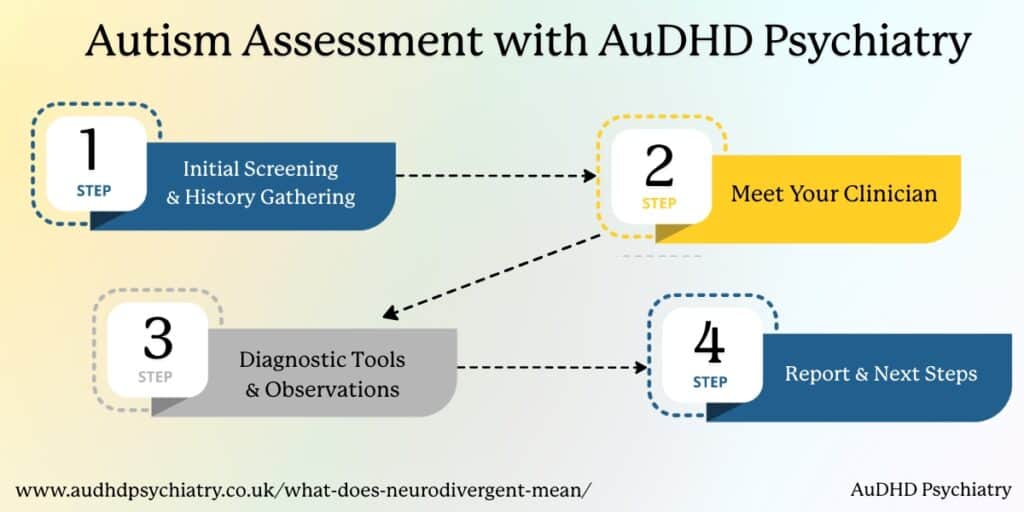
Autism Assessment with AuDHD Psychiatry
A professional autism diagnosis is the most reliable way to confirm whether you or your child meets the criteria for Autism Spectrum Disorder (ASD). Assessments may take place through the NHS or privately, depending on waiting times and your preferences. At AuDHD Psychiatry, our structured four-step process ensures accuracy, compassion, and clarity every step of the way.
Step 1 – Initial Screening & History Gathering
You’ll complete secure online forms covering developmental history, education, health, and current support needs. If possible, an informant (such as a parent or partner) can provide additional background to strengthen diagnostic accuracy.
Step 2 – Meet Your Clinician
In an in-depth call, your clinician explores social communication, flexibility, sensory processing, and lifelong behavioural patterns. We also consider masking behaviours and co-occurring conditions such as ADHD or anxiety.
Step 3 – Diagnostic Tools & Observations
Validated diagnostic measures, such as AQ-10, RAADS-R, CAT-Q, or ADOS-2 Module 4, are used where appropriate. Clinicians evaluate all findings against DSM-5 and ICD-11 criteria to ensure an accurate and meaningful diagnosis.
Step 4 – Report & Next Steps
You’ll receive a detailed report which outlines your results, strengths, and recommendations for support across work, education, or home life. Optional follow-up sessions are available for therapy, coaching, or additional referrals. A structured assessment ensures clarity, early intervention, and appropriate ongoing support.
Combined Autism and ADHD Assessments
For individuals who identify with traits of both conditions, AuDHD Psychiatry offers combined autism and ADHD assessments. This integrated approach aims to provide a clearer picture of how both neurotypes interact, helping you access the right interventions, therapies, and accommodations for your unique needs.
Therapy and Ongoing Support
After diagnosis, many people benefit from behavioural therapy or occupational therapy, which help manage executive function difficulties, sensory sensitivities, or social interaction challenges. Depending on the individual’s goals, therapy may focus on developing communication, emotional regulation, and life skills, empowering neurodivergent adults and children to thrive independently.
This approach also bridges the medical model and the social model of disability. While the former focuses on symptoms and treatment, the latter emphasises building supportive environments that remove barriers. Both perspectives are valuable when applied together.
If you’re considering a professional assessment or suspect you might be neurodivergent, you can learn more from our guides:
- How to Get Tested for Neurodivergence: A Patient’s Step-by-Step Guide
- Private Autism Assessment Cost
Understanding your neurotype is often the first step toward meaningful, sustainable support.
Acceptance, Inclusion, and the Neurodivergent Community
The strength of the neurodivergent community lies in connection, advocacy, and shared understanding. Whether through the autistic community, ADHD networks, or broader neurodiverse groups, these communities promote self-acceptance and push for inclusive environments where individuals can thrive.
Building Inclusive Spaces
When workplaces, universities, and schools embrace inclusive environments, they move beyond accommodation to genuine equity. Adjusting lighting, sound levels, or communication styles can dramatically improve the quality of life for neurodivergent people. Training programmes that help colleagues understand unique needs also strengthen collaboration and mutual respect.
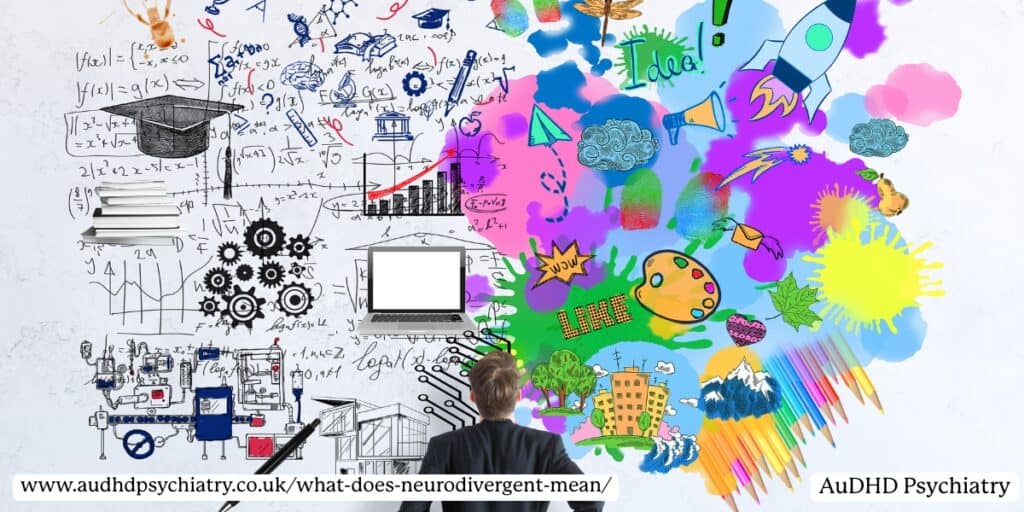
The Power of Neurodivergent Strengths
The neurodiversity movement reframes cognitive differences as sources of strength. Many neurodivergent individuals demonstrate heightened creativity, strong memory, and unique problem-solving abilities, offering a competitive advantage in innovation, research, and design. These strengths highlight why inclusion is not just ethical, but strategic.
Support and Advocacy
Across the UK, support services help neurodivergent people and their families access education, therapy, and workplace adjustments. Self-advocacy and peer support are equally vital in building resilience and self-esteem. Together, these resources reflect the neuro-affirmative approach that defines the modern neurodiversity paradigm.
The Future of Neurodiversity
The neurodiversity movement continues to reshape how we view learning, mental health, and social interaction. Once a niche concept, it now influences workplace policies, educational frameworks, and public health discussions worldwide.
Changing Perspectives
As research deepens, society is shifting from a deficit-based view of brain differences toward an alternative perspective—one that recognises groups of people with diverse neurological profiles as integral to human progress. Future healthcare systems are expected to prioritise inclusive design and neuro-affirmative care, ensuring every person has equal access to support.
Education, Work, and Research
Schools and employers are increasingly adopting practices grounded in the idea of neurodiversity, from flexible learning methods to strength-based hiring. Ongoing research findings continue to expand our understanding of how neurodivergent individuals experience the world, leading to better interventions and environments.
By fostering an atmosphere of acceptance and curiosity, we encourage a better understanding of how the human brain works, acknowledging that difference, not conformity, drives progress.
What Does Neurodivergent Mean? Final Thoughts
So, what does neurodivergent mean in today’s world? At its core, the term refers to people whose brains function differently from what society defines as “typical.” These differences may affect how someone thinks, learns, focuses, or interacts, but they are part of the natural variation within the human brain, not signs of disorder or deficiency.
Being neurodivergent means having a cognitive profile that diverges from the norm, encompassing conditions such as autism, ADHD, dyslexia, dyspraxia, and Tourette syndrome. It also reflects a broader truth: that human diversity extends to our neurology just as it does to our genetics, personalities, and cultures. Recognising this helps move society away from a one-size-fits-all model of success and towards genuine inclusion.
By adopting the concept of neurodiversity, we can shift away from outdated labels and move toward celebrating unique strengths, whether that’s creativity, resilience, or the ability to see problems from different ways. With greater understanding, the neurodivergent community continues to shape a future where everyone has access to the right support and the opportunity to thrive.
If you identify with traits discussed in this guide or want clarity about your own neurotype, you can book a free introductory call with our clinicians. Professional insight can help you understand how your brain works and access the right support to thrive as your authentic self.
You Might Also Like
Contact Us
We’re here to answer any questions you might have.
Get in Touch
Opening Hours
Contact Form
We’re here to help. Reach out and we’ll get back to you within 24 hours (Monday – Friday).

